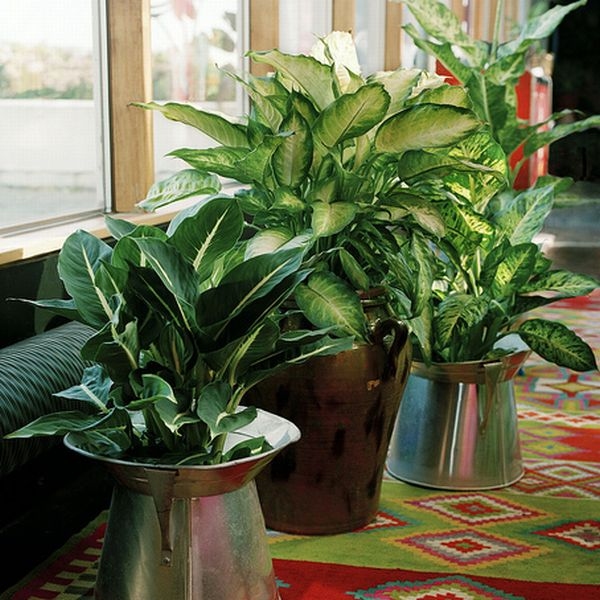 If, after a while, the water flows through into the saucer or planter when watering from above, the bale is generally sufficiently moistened. But it flows through very quickly, then the earth balls have already dried out too much and therefore absorb moisture only with difficulty. Only the “water bath” discussed above helps here.
If, after a while, the water flows through into the saucer or planter when watering from above, the bale is generally sufficiently moistened. But it flows through very quickly, then the earth balls have already dried out too much and therefore absorb moisture only with difficulty. Only the “water bath” discussed above helps here.
When part of the irrigation water accumulates in the saucer, we have to do it when it's cloudy, remove in cool weather, so that the root section standing in the water does not die off due to a lack of air. With warm, However, in sunny weather and high room temperatures, the water that has run into the saucer will evaporate very soon, whereby the air in the immediate vicinity of the plant is enriched with moisture.
For strong water consumers such as Calla, hydrangea, Zypergras, floriferous gloxinias and strong specimens of ornamental asparagus (Asparagus burst rule) you can always leave some water in the saucers or pots during the warm season and in heated rooms. The plants then take care of themselves from this supply as needed. However, this standing wetness also leads to those mentioned when it is cool
plant species to root damage. Cyprus grass is an exception, which is also in the wild with its roots constantly in the water.
On indoor plants with an abundance of densely packed leaves and flowers (cyclamen are examples, Becherprimel, Gloxinia and African violets as well as the indoor ferns from the leafy plants) watering from below can often be more beneficial than watering from above. With this form of water supply, the required amount of moisture is sucked in from water-filled coasters. However, you should fill them up to the top with coarse sand or stone chippings and press the pots slightly into the substrate. Then only that much water goes into the potting soil, as consumed by the plant itself and by evaporation at the earth's surface. The procedure, which could be described as "self-watering"., corresponds to the principle of backwater irrigation in flat areas, Kiesgefüllten Wannenbeeten, which is used as a modern cultivation method in nursery nurseries.
For plant-physiological reasons, the best time of day for watering our houseplants is in the evening. Plant growth takes place at night, and the building materials formed by the leaves during the day are transported to the growth points with the help of the water or deposited as a reserve in the storage organs. Therefore, after the high water consumption due to strong evaporation in the hours of sunshine, the plant needs water the most. So you should water mainly in the evening. Under no circumstances should water be used during the hottest hours, if the potting soil is strongly heated by solar radiation. Plants should indicate a lack of water at this time of day by their leaves flapping, then you have to shadow them and overpower them, to increase humidity and reduce evaporation. The water used should be at least room temperature, because in the other case the plants "cold" due to sudden strong cooling.
